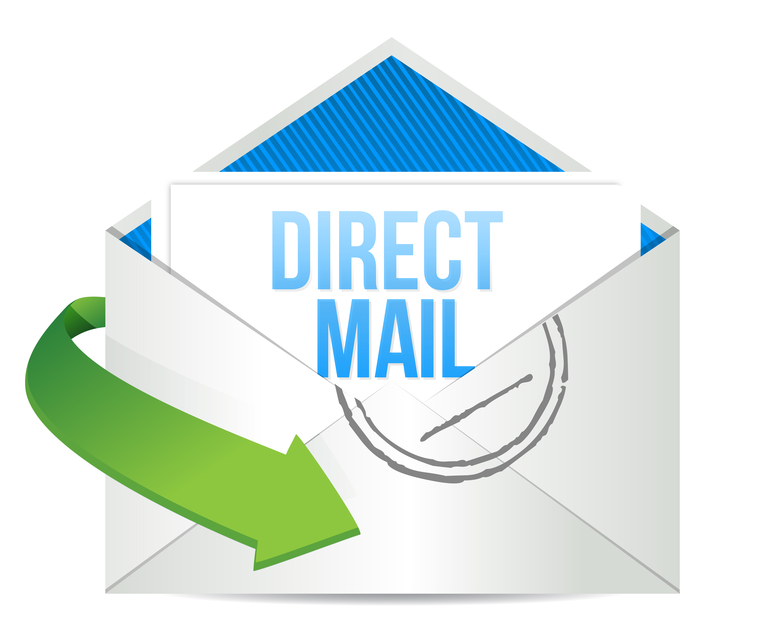
Many fulfilment houses now provide admail services, sometimes known as direct mail services or
advertising mail services. That is, essentially, arranging delivery of
adverts or marketing material to existing or potential customers,
usually through the post. All too often dismissed as ‘junk mail’, direct
mail services are one of the most effective and efficient ways to
communicate with your market. Direct mail services are the most common
form of direct marketing, used heavily by businesses small and large,
non-profit organisations and charities all over the world.
As email and electronic communications handle more and more of our
day to day interpersonal communications, the little mail we still get
grows in importance. While we once separated all mail into ‘bills’ ‘junk
mail’ and ‘real mail’, now we see incoming mail as consisting of simply
‘bills’ and ‘not bills’. In fact, the delivery of direct mail
advertising is becoming a large part of the postal service’s business in
many countries, especially the UK and US. As fewer private letters are
sent, post offices around the world are becoming much more welcoming to
direct mail services, and eager to do more business with them.
How direct mail services are targeted
Direct mail services can consist of catalogues, promotional CDs or DVDs, coupons for local or online goods and services, advertising circulars, or even fully produced guides to local services and businesses supporting advertising and coupon content. The key to making this all pay is making sure it gets to a high proportion of people who are likely to use your goods or services. Many direct mail campaigns are highly targeted, and should not really be thought of as a ‘mass mailing’ at all.The target group could consist of pre-selected known addresses (current customers, sales leads, or other known potential customers). Alternatively, certain geographical locations can be targeted rather than individuals. Most post offices will contract to deliver advertising content unaddressed, simply depositing one with each valid address on one or more delivery routes or neighbourhoods, working hand in hand with the direct mail services to do so.
When targeting individuals, a database of valid addresses and associated personal information is analysed and a list of individuals judged most likely to buy the goods or service, or respond positively in some other way, is generated. Limiting the mail shot to known valid addresses of potentially interested recipients cuts down on cost, bit more importantly the bad feelings often associated with untargeted ‘junk mail’. This is considered an example of database marketing.
When neighbourhoods are targeted, they can be selected for their proximity to a particular brick and mortar store or distribution network, or they may be chosen for a particular demographic profile which corresponds well to that of known customers.
The content can vary between recipients as well, with for example male targets receiving a different package of offers to females, or those households with children receiving a different catalogue than single households. Known customers can be sent different content than potential customers. The details can vary widely at this point, depending on your direct mail service provider.
The cost-effectiveness of direct mail services
The uninformed often assume that direct mail services are wasteful or inefficient. The fact is, though, that admail can be extremely efficient and highly effective, so long as it is professionally targeted. Business intelligence assets such as the databases mentioned above and effective strategy reduce both waste and the overall cost of the campaign, and iteration based fine tuning such as split testing and Nth name selects make the campaign performance improve over time, and from campaign to campaign.Of course, some campaigns are not sales oriented, so their cost effectiveness cannot be analysed in the same way. Political campaigns are big users of direct mail services, targeting whole electorates or particular subgroups of voters depending on the particular campaign goals. The same targeting techniques can be used though, and the same gains in effectiveness can be expected.
Certain organizations and individuals have become known for their prowess in direct mail, including in the US, the Free Congress Foundation in the 1970s, Response Dynamics, Inc. in the 1980s, the National Congressional Club, and Richard Viguerie.[16] With the advent of the Internet in political campaigns, direct mail became just one of many campaign management tools, but still played a significant role.
Business to business direct mail services
B2B direct mail services target other businesses rather than homes or individual customers. B2B direct mail campaigns work in two general ways. The first is a direct sales attempt, avoiding the use of an in-person sales force or retail location. This is most popular for products that are more or less fungible or require little in the way of demonstration. The second strategy is to use the mailings to generate leads for a traditional sales force, either face to face or telesales oriented. It is best used for high price-point items that require demonstration or that profit from generating a pre-qualified audience.One method of direct mailing used in B2B is known as “bill-meâ€. In this direct-mail marketing offer, the buyer is shipped the product prior to payment and then is sent an invoice later






